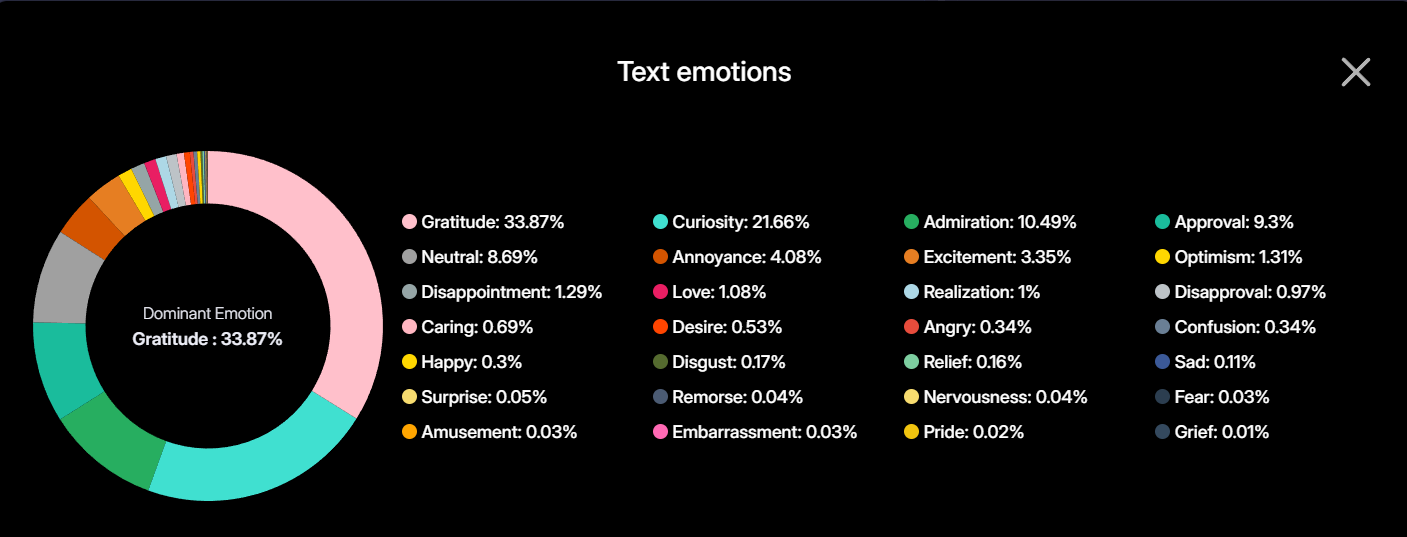%201.jpg?alt=media&token=48e8d3d5-1f8a-4b73-b614-f7954be767fe?w=3840&q=75)
IBM’s Text Emotion Detection vs Imentiv AI: From Basic Sentiments to Contextual Emotion Intelligence
When we communicate in words, whether through emails, feedback, or reviews, our emotions are hidden between the lines. Detecting those emotions accurately is what makes text emotion analysis such a powerful capability.
IBM’s text emotion detection models have been among the early tools that tried to read those hidden signals. But as organizations seek to understand not just what people feel but why they feel that way, Emotion AI needs to go beyond simple sentiment recognition. That’s where Imentiv AI steps in, transforming text-based emotion analysis into a deeper, context-aware understanding of human expression.
IBM’s Approach: Lexicons and Basic Emotion Categories
IBM’s text emotion detection, available through its Watson Natural Language Understanding (NLU) service, uses a combination of machine learning and lexicon-informed natural language processing.
This means it uses models trained on linguistic data to detect emotional cues and classify text into a few major emotional categories: joy, sadness, anger, fear, and disgust.
For example:
- “I’m thrilled about this opportunity!” → Joy
- “I can’t believe this went wrong again.” → Anger
This hybrid approach captures surface-level emotions effectively, making it useful for social listening, customer reviews, or feedback summaries.
But human emotions are rarely that simple. The same sentence can express different feelings depending on tone, intent, and context. “I’m fine,” for instance, could mean contentment or quiet disappointment.
Imentiv AI’s Emotion Analysis: Context Meets Psychology
Imentiv AI takes text emotion analysis to the next level. Instead of stopping at basic categories, it analyzes text using over 28 emotion types.
Text emotions analyzed by Imentiv AI: gratitude, neutral, disappointment, caring, happy, surprise, amusement, curiosity, annoyance, love, desire, disgust, remorse, embarrassment, admiration, excitement, realization, angry, relief, nervousness, pride, approval, optimism, disapproval, confusion, sad, fear, grief, and more.

Powered by Emotion AI and psychology-backed models, Imentiv AI doesn’t just look at word meanings. It interprets how emotions shift and interact within the message. Using advanced contextual modeling, it captures subtle cues such as sarcasm, emotional suppression, and mixed emotional states that traditional models often miss.
Beyond Detection: Building Emotional Profiles
What sets Imentiv AI apart is its ability to connect every emotional signal to a larger emotional narrative.
Each text input contributes to an Emotion Graph — a visual and analytical map that tracks how emotions evolve over time across messages, interactions, or individuals.
With the AI Insights feature, you can get deeper clarity into what these emotional patterns mean. It allows you to ask content-specific questions and receive targeted, contextual answers. This helps you uncover the why behind emotional changes, not just the what.
So instead of seeing a message as simply “angry” or “happy,” you can explore deeper questions such as:
- Is frustration building up over repeated interactions?
- Do positive emotions reflect empathy or confidence?
- How do emotional tones shift between written and spoken communication?
These layers of analysis turn raw emotion data into meaningful emotional intelligence.
Why Context and Empathy Matter
Emotion analysis isn’t just a technical challenge; it’s a human one. People express emotions in complex, culturally diverse, and situational ways. Without understanding context, even the most sophisticated AI risks misinterpretation.
That’s why empathy is at the heart of Imentiv AI’s design. Its emotion insights are guided by psychological models and can be reviewed by in-house psychological experts when deeper interpretation is needed. This human-AI partnership ensures emotional understanding that is responsible.
Takeaway
IBM’s text emotion detection helped pave the way for machines that can read feelings from words. It’s time to build on that foundation and take emotional intelligence in technology even further.
Imentiv AI brings context, empathy, and psychology into text emotion analysis, helping organizations truly understand what people feel and why.
👉 Explore Imentiv AI to see how context-driven Emotion Analysis can transform how your teams communicate, engage, and make decisions.